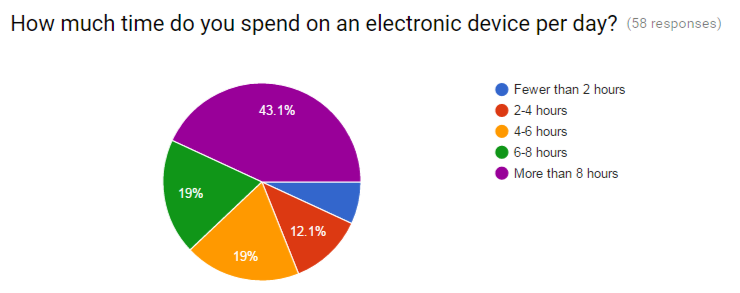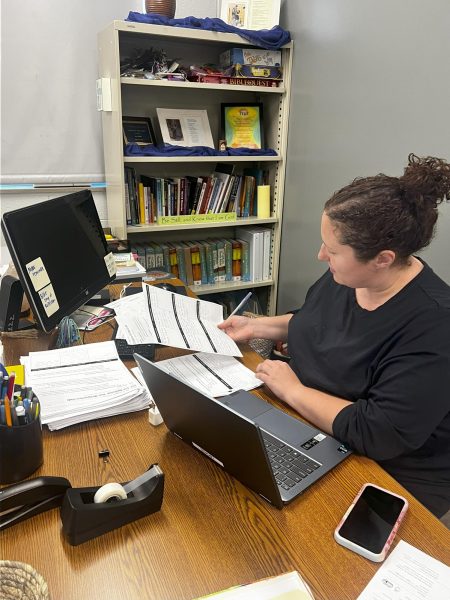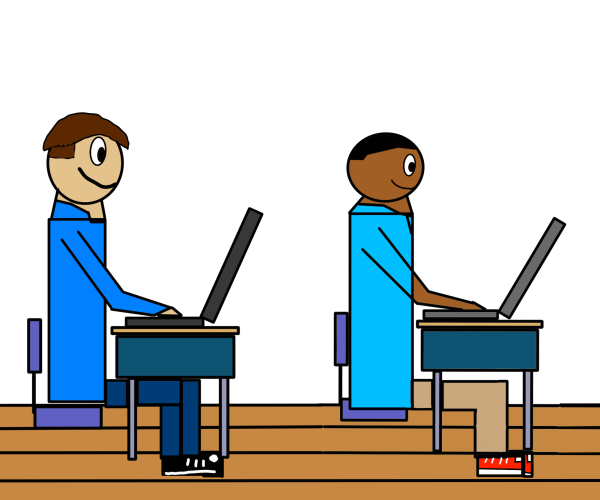iPosture position
New technology’s adverse effects and their preventions
The word for it is “iPosture.” That is the word coined to describe the stooped, turtleneck-like stance becoming common among teens today from the use of cell phones, computers or iPads. A recent survey of SVHS students revealed that over 60% of students use electronic devices for eight or more hours per day. If you think about it, more than half of that time is just spent in class using the iPad; six classes a day, each 45 minutes gives 270 minutes of screen time. Then, when you take into account that almost all homework involves the use of the iPad, screen time related to schoolwork alone greatly increases.
In addition to back pain from “iPosture,” over-exposure to electronic screens has also been linked to Computer Vision Syndrome. Have you ever had eyestrain, headaches, blurred vision or dry eyes after a day of electronic screen exposure? Well, according to the American Optometric Association, those are the symptoms of Computer Vision Syndrome. Even spending as little as two hours a day in front of a media screen makes you at risk for vision problems.
Also, for many of us that use tablets, laptops or smartphones before bed, it becomes more difficult to fall asleep because we have spent so much time in front of a screen. Scientific studies have found that the glow from the screen causes reduced levels of melatonin, the hormone that helps induce sleepiness. Screen exposure makes it harder to fall asleep and reduces the amount of time spent in restorative sleep.
Unfortunately, we do not know the long-term consequences of our close association with media screens, but we can do a few things to address the problems that have arisen thus far. First, for combating iPosture, being aware you are slouching or hunching over your tablet or smartphone coupled with trying to begin the use of the device with a straight back at a reasonable height and distance will help. Next, to reduce the risk of eye strain, short breaks should be taken every 20 to 30 minutes. You should try to look at a distant object for a few seconds. Also, it is recommended that you avoid prolonged work on a tablet and instead switch to a computer screen that is about 20-28 inches away from your eyes, according to the American Optometric Association. Lastly, as hard as it is to be away from your friends, you should put away the electronic screen at least 30 minutes before you decide to go to sleep. It’s very important especially at our school with the amount of device usage we encounter to be aware of things like “iPosture” and the other adverse effects our health screen exposure can have. As a community we can work to replace “Iposture” with “iWentoutside.”
Your donation will support the student journalists of Saint Viator High School. Your contribution will allow us to purchase equipment and cover our annual website hosting costs.






